I picked up my first guitar in August 1987 prior to my first year of high school. My rock stardom was all but assured. It never happened, although I did manage to play most of the original music venues in Philly as I hit my thirties. I never played The Spectrum, but I at least got to see the name of my band in the concert listings for the very same venues where I attended all-age shows as a teenager. For me, that was a thrill enough.
I was fortunate enough to be able to shoot a small outdoor festival called PetZoo featuring the jamband The Heavy Pets. On a whim, I decided to take a photo of guitarist Mike Genius' fretboard as he played lead. Though I cannot locate the EXIF data, I know that I was using a Canon Rebel XTi with the sharpest lens I've ever owned- the Canon 70-200 4.0L. Mike Genius of The Heavy Pets, PetZoo Festival, Springfield, PA, July 26, 2008.
Naturally, I was drawn toward concert photography when I began shooting. I've been fortunate to shoot some of my very favorite artists- Ray LaMontagne, David Gray, Joe Satriani with Chickenfoot- and I've quickly come to the following conclusion: someone trying to master concert photography is about to dive into some very difficult waters. Of course, the challenge is what turns it into such an obsession and makes it so rewarding when you get your 4 or 5 nice keepers from a memory card filled with 550 shots. (That's about what I average. Your mileage may vary.)
Here's what can make getting great concert shots so difficult:
1. Most performers provide a photo pass that you may use for the artist's first three songs only, and three songs can go by pretty quickly;
2. Indoor lighting in arenas and theaters is notoriously poor, and the use of flash, tripods and monopods is prohibited near the stage;
3. Exposure can change several times within seconds due to the light show;
4. The lighting rig will often contain lights of varying color temperatures;
5. Some artists and/or venues may designate an area for photographers that does not allow for optimal shooting angles, including next to the soundboard which will necessitate the use of a supertelephoto lens;
6. Performers are rarely stationary, so you're often shooting moving objects at relatively slow shutter speeds;
7. Microphone stands, monitors, or other equipment, especially on a smaller stage, will often clutter the frame and obscure the subject.
If you're lucky enough to be shooting an outdoor gig on a sunny day, many- but not all- of these challenges will be eliminated.
Equipment
It goes without saying that you'll need 2.8 or faster glass for indoor concert photography. I use the Canon 70-200 2.8L. It's not the Image Stabilizer version, and I highly recommend that you use lenses equipped with IS, VR (Nikon) or OS (Sigma) for concert photography. IS won't freeze the movement of a subject, but will allow you to shoot at relatively slow shutter speeds without camera shake rendering a nicely-composed image unusable. (The general but unscientific rule is that the shutter speed for a camera handheld must be 1/focal length for a full frame camera and 1/focal length*1.6 for a camera with a crop sensor. For example, the minimum shutter speed for handholding my 70-200 @ 200mm on a Canon 50D body would be 1/320 under this rule, but the extra weight associated with such a wide, heavy lens and my unsteady hands would probably require a shutter speed closer to 1/500.)
I've seen concert shooters use the 70-200 2.8L IS, the 135mm 2.0L prime, 24-70 2.8L, 50 1.4L prime, and the 300 2.8L when shooting from the soundboard. Some concert photographers also use a fisheye lens with great results. Most concert shooters, however, use the Nikon system as the lowlight performance at high ISOs is considered to be superior to Canon's. Canon is aware of this and newer Canon bodies may or may not have a high ISO performance equivalent or similar to Nikon's.
Speaking of ISO, your camera body will need to be capable of producing quality images at ISO settings beyond 1600. (Entry-level dSLRs generally have a maximum ISO of 1600 and won't be useful indoors even at f/2.8.) I often have to bump my ISO to 2500 or even 3200 indoors to obtain the desired shutter speed.
This image of Ray LaMontage was taken at the Tower Theatre, which is notorious for its poor lighting. It was my first indoor concert shooting experience. The grain in the image is evident even at this small size. It was a very lucky shot, anyway, considering the slow shutter speed. Ray LaMontagne, Tower Theatre, Upper Darby, PA, April 4, 2009. Canon 50D, 70-200 2.8L @ 195mm, f/2.8 @ 1/125, ISO 3200.
Technique
It's very important to shoot in RAW format as a concert photographer. The use of lights of varying color temperatures will wreak havoc on the white balance; don't trust your camera's 'auto' setting to do the job properly. That said, I leave the white balance set to auto, knowing that I can manipulate the white balance of a RAW image in post-processing. (You cannot change the white balance of an image shot in .jpg format. Some photographers don't see the advantage of shooting RAW and cling to shooting .jpg with religious fervor. Trust me on this: if you're shooting a concert, especially indoors, shoot in RAW format only. Shooting both RAW and .jpg simultaneously will slow down your high-speed continuous shooting mode.)
Set your camera at the widest aperture and don't make the mistake that I always do by shooting in manual. Use aperture priority mode and dial down your exposure compensation to increase your shutter speed if the shutter speeds you're getting are too slow. You should be able to give yourself a small exposure boost later when processing your RAW image without much image degradation. As will be discussed further below, you may also be able to dial down your ISO depending on the artist's lighting rig.
Don't be alarmed when viewing your photos in-camera at the venue. Post-processing is a necessity when shooting concerts due to the varied lighting. The following two examples, shot at the Susquehanna Bank Center in Camden, NJ, are the same file with only a white balance adjustment from 'auto' to 'tungsten' and no other processing:
Though not a keeper because it's a bland shot, you can see immediately that a change in white balance made the flesh tones much more realistic. Sometimes, it's not always seemingly obvious changes to 'tungsten' or 'fluorescent' that will fix the original file. Oddly, I've used 'daylight' and 'cloudy' as well to repair an image. Sometimes, I'll use Canon's DPP software to bring down the reds only in addition to changing the white balance. And when all else fails, there's always a conversion to black & white available:
I couldn't create a satisfactory color image from this file, even when attempting a custom white balance, so I simply converted it to black & white as a last resort. David Gray at Susquehanna Bank Center, Camden, NJ, August 20, 2010. Canon 50D, 70-200 2.8L @ 70mm, f/2.8 @ 1/320 at ISO 3200.
I also use a single focus point to achieve faster focus and use AI Servo mode with high-speed continuous shooting.
At a hard rock show, the more intense lighting will sometimes allow you to drop your ISO and still achieve a high shutter speed. I was able to capture this image of guitar legend Joe Satriani playing with Chickenfoot at only ISO 1600:
Joe Satriani of Chickenfoot, House of Blues, Atlantic City, NJ, August 22, 2009. Canon 50D, 70-200 2.8L @ 70mm, f/2.8 @ 1/500 at ISO 1600.
Remember that you will be at your shallowest depth of field while shooting at f/2.8 or wider. When both Joe Satriani and Sammy Hagar appeared in front of me together, I made sure to take several photos with the focus point on Satriani for half of them and Hagar for the others. My only regret about shooting from directly in front of the stage was not having a 24-70 handy to create wider images:
Sammy Hagar of Chickenfoot, House of Blues, Atlantic City, NJ, August 22, 2009. Canon 50D, 70-200 2.8L @ 70mm, f/2.8 @ 1/500, ISO 1600.
Joe Satriani of Chickenfoot, House of Blues, Atlantic City, NJ, August 22, 2009. Canon 50D, 70-200 2.8L @ 70mm, f/2.8 @ 1/500 at ISO 1600.
Michael Anthony of Chickenfoot, House of Blues, Atlantic City, NJ, August 22, 2009. There is a general rule about not cutting off the headstock of an instrument, but I like this image because the lighting is illuminating the subject's face perfectly. Canon 50D, 70-200 2.8L @ 100mm, f/2.8 @ 1/640 at ISO 1600.
One of the most important things is to look around the stage for potential images that don't involve the frontman or guitar hero. Perhaps my favorite photo is of Ray LaMontagne's primary pedal steel player, Eric Heywood, who also logged time with The Pretenders and Son Volt. Since photographers were relegated to the side of the stage for this set, Eric was the only performer facing me directly:
Eric Heywood of Ray LaMontagne & The Pariah Dogs, Susquehanna Bank Center, Camden, NJ, August 20, 2010. Canon 50D, 70-200 2.8L @ 200mm, f/2.8 @ 1/250 at ISO 3200.
Summary
1. Concert photography can be a challenging but rewarding experience.
2. Use fast glass with an aperture of 2.8 or wider for indoor venues. (Note: This will also apply for venues with a covered stage and seating section with 'lawn' seating in the back. The light from the open end will generally not travel far enough to reach the stage.)
3. Have a camera body that is capable of providing images at ISOs of up to 3200.
4. Shoot RAW so that the white balance can be easily switched later.
5. Use a single focus point to ensure faster focus from your lens.
6. Use AI Servo mode since performers often move around the stage.
7. Find out where you will be shooting from, if possible, before the show. If relegated to the soundboard, you'll need a supertelephoto lens but should be able to use a tripod or monopod.
8. Don't bother security or the performers by shooting past your allotted 3 songs.
For more photos with available EXIF data:
Become a fan on facebook:
One of the few surviving photos of myself on stage with my full band, the astral lounge:
The Trocadero, Philadelphia, PA

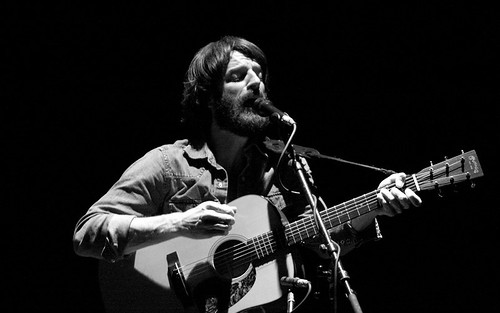
![[JPG-BLOG] IMG_5391](http://farm6.static.flickr.com/5089/5304527201_f04060d0ab.jpg)
![[JPG-BLOG2] IMG_5391](http://farm6.static.flickr.com/5129/5305121146_92fa2d7b20.jpg)
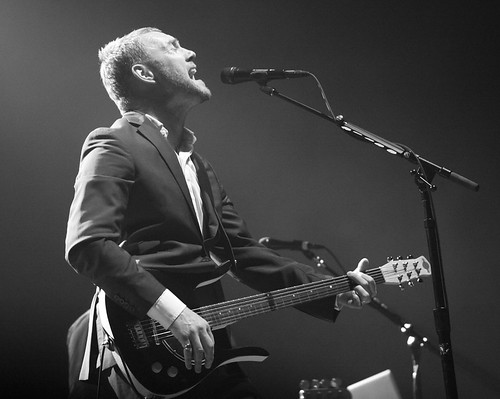
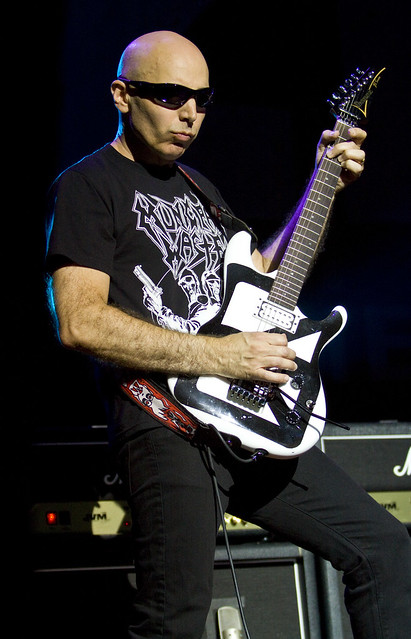
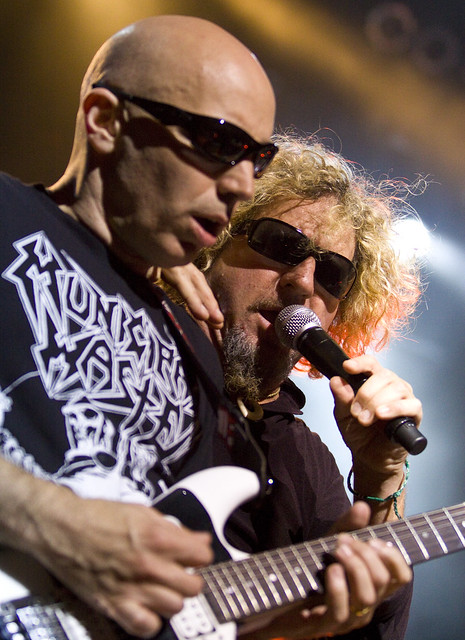
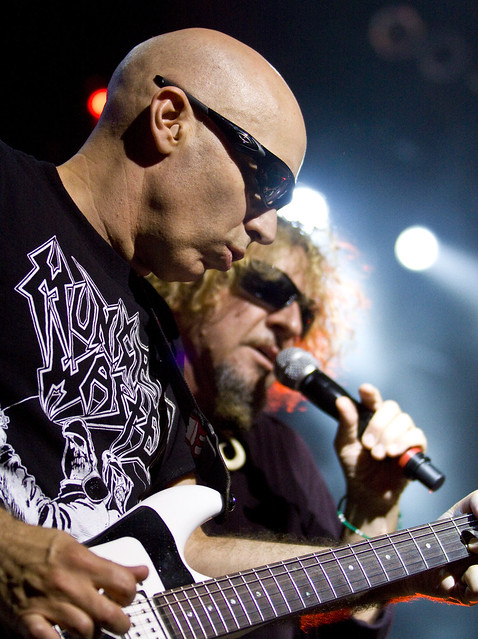


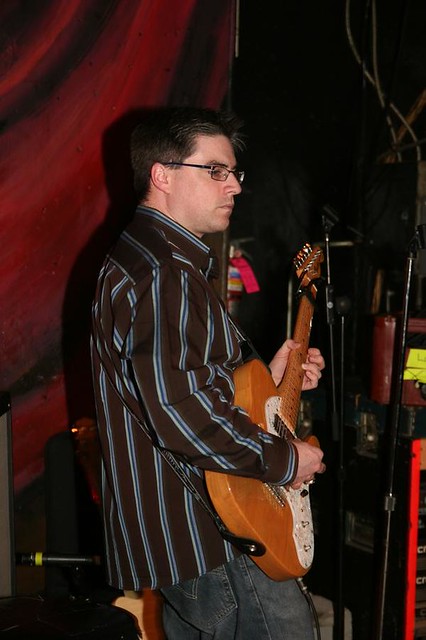
JPM, Thanks for the info, I have only shot shot jpeg will try RAW on your advice. The lighting is too yellow at times like your example.
ReplyDelete